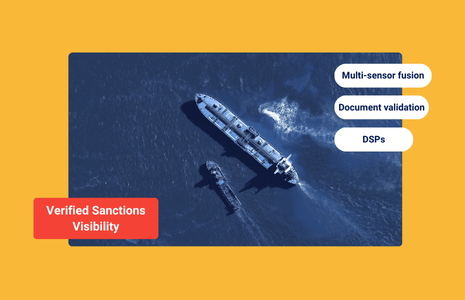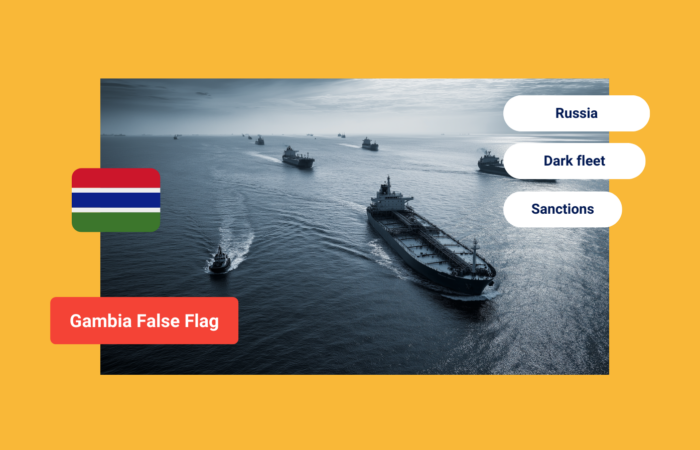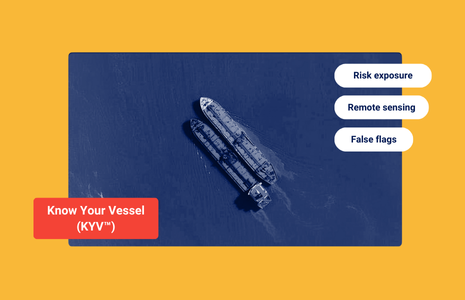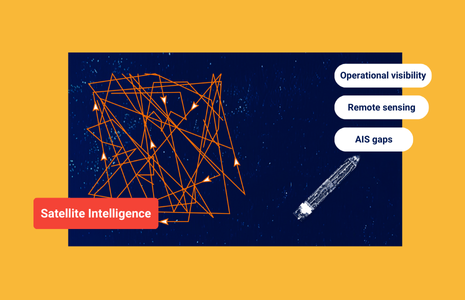A quick guide for maritime due diligence
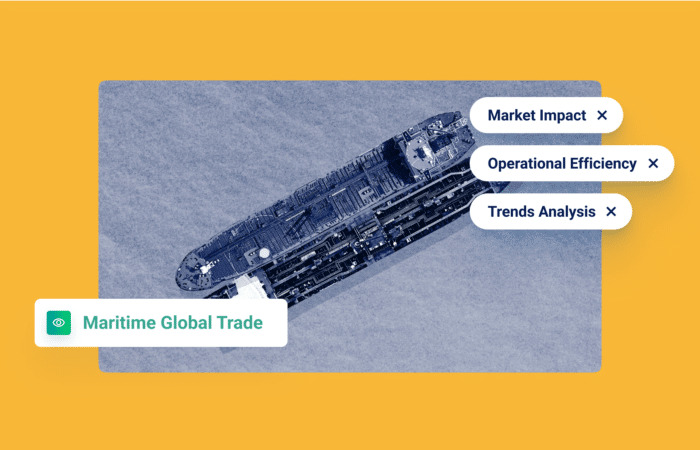
What’s inside?
Maritime due diligence is necessary to mitigate the risks associated with customers, vendors, employees, contractors, and other third parties to ensure your business is protected from both regulatory and reputational risk.
Let’s take a more in-depth look…
Know who you’re getting into business with
Policies regarding global crimes have shifted from reactive investigation, to a global proactive approach, and enforcing sanctions regimes. This evolution can be seen in advisories by the Office of Foreign Assets Control (OFAC) in the U.S. and the Office of Financial Sanctions Implementation (OFSI) in the UK. This regulatory environment necessitates entities in the maritime domain, including energy and shipping companies, and financial institutions, to thoroughly investigate the vessels they conduct business with to ensure compliance. Sometimes, vessel compliance is not enough, and it’s important to look beyond the vessels themselves to the company, business owner, and associated fleet to execute appropriate counterparty due diligence and maritime compliance.
Detailed ownership data and insights are crucial to identify similarities between vessels and forecasting risky ownership trends. The ownership details include the company name, address, email address, and phone number – as well as the seven levels of vessel ownership: beneficial owner, registered owner, technical manager, ISM manager, commercial controller, commercial manager, and operator. Moving beyond manual data analysis methods when evaluating vessel ownership and management is vital, as deceptive shipping practices are constantly evolving and advancing. It’s important to know who you’re doing business with and to know your vessel, with both comprehensive counterparty due diligence and vessel compliance.
Stay ahead of evolving deceptive shipping practices
Instead of trying to conceal illicit vessel behavior (like going “dark” and turning off the AIS), bad actors have changed direction and now seek to benefit from illegal activities while looking as if it’s “business as usual,” or hiding in plain sight. New tactics have emerged, like “spoofing,” an umbrella term with multiple interpretations. This includes using various identities, transmitters, and even GNSS manipulation methodologies.
Important deceptive shipping practices include:
- Dual transmission – the use of multiple AIS transmitters onboard a single vessel transmitting different entities with separate International Maritime Organization (IMO) numbers
- Flag hopping – when bad actors repeatedly change transmitted MMSIs (flags) to avoid detection. This practice is also a legitimate financial tactic, so it’s not always defined as illicit activity
- Zombie vessel – using a scrapped vessel’s identity to perform illicit operations without legal repercussions
- AIS handshake – the use of a decoy vessel as a disguise. The dirty vessel will assume the clean vessel’s identity while they are sailing nearby, while the clean vessel makes its way to its destination while “dark.” Upon returning, the vessels recreate the switch, leaving the clean vessel unscathed
NOTE: “dirty” refers to a vessel subject to public derogatory reporting or law enforcement action that may inhibit its ability to engage in commercial operations at will. “Clean” refers to a vessel that has not been the subject of derogatory reporting or law enforcement action that would inhibit its ability to engage in normal commercial activity. So-called “dirty” vessels may masquerade as clean vessels to conduct activities that would be prohibited or difficult under their own identities.

Going beyond sanctions
While screening against global sanctions is necessary, ensuring compliance with global anti-money laundering and anti-corruption legislation is insufficient. Organizations are increasingly making decisions not only for legal reasons, but also utilizing “moral sanctions.” This significantly affects a company’s reputation, plus customer and employee retention.
It is important that organizations throughout the maritime ecosystem take a holistic approach to identifying counterparty risk, ensuring comprehensive maritime compliance, via counterparty due diligence. This includes going beyond the immediate maritime risk factors and obtaining all needed tools, data, and audit trails to screen maritime and non-maritime companies and individuals against sanctions, politically exposed persons (PEPs), government watchlists, and adverse media coverage.
- Sanctions
This includes individuals and entities sanctioned, including global terrorists, drug kingpins, and the leadership of high-risk jurisdictions. The number of sanctioned individuals and entities significantly increased since the start of the Russia-Ukraine conflict.
- Politically exposed persons (PEPs)
These individuals have been entrusted with high political office and are at risk of being bribed and involved in corruption. Because of this risk, the financial activities of PEPs, their immediate relatives, and associates must be monitored closely to ensure they are not using global maritime businesses to hide illegal activities.
- Government watchlists
This entails identifying individuals and entities of interest to law enforcement and regulatory enforcement agencies, and is critical in ensuring companies are not contracting with or employing individuals or entities under investigation by agencies, such as the SEC, OCC, CFTC, IRS, FinCEN, INTERPOL, and Europol.
- Adverse media coverage
In many cases, individuals or entities involved in financial crimes, predicted offenses, or terrorism will be identified by investigative news media well before this information is available on a government watchlist.
Maritime compliance extends to the entire supply chain
Understanding maritime compliance, and mitigating risk goes beyond the vessels and extends to the entire supply chain. Entities like factories, ports, refineries, mines, trucking companies, and the key employees of these organizations are often overlooked, but can significantly impact your risk exposure. This is why maritime due diligence is so essential, to ensure that every person or entity involved is in the clear and not going to put your organization or company at risk. Commercial due diligence according to KPMG, “…saves the vendor time and resources by anticipating the demands and questions of potential buyers.”
Managing risk in one place
Leveraging maritime risk mitigation with non-maritime screening enables compliance and risk teams to manage all risks in one place for the best maritime due diligence. The ability to toggle between maritime and non-maritime insights and recommendations easily eliminates the need to work with multiple platforms. This helps companies simplify screening workflows, decrease the cost of human resources, and reduce manual investigation time.

With an API Insights Lab like Windward’s, you can easily customize and enrich any solution with real-time, implemented intelligence on areas of interest, vessel behavior, maritime, and non-maritime companies, and shipment risk levels. Intuitively and flexibly integrate a wide range of unique Maritime AI™ insights, behavioral data sets, and risk recommendations into your organization’s existing workflows. Optimize your workflows and decision-making processes with an added layer of AI-driven insights and automatic push notifications in real-time.
Ensure your business is protected
Trending
- The EU’s 18th Sanctions Package Lookback Started. Trading Russian Products? You're At Risk. Nov 24, 2025
- Tanker Freight Rates Hit Five-Year High Amid Russian Oil Sanctions Shake-Out Nov 6, 2025
- Sanctioned, Stateless, and Still Sailing: Expert Insights from the Frontlines of Maritime Sanctions Nov 3, 2025









